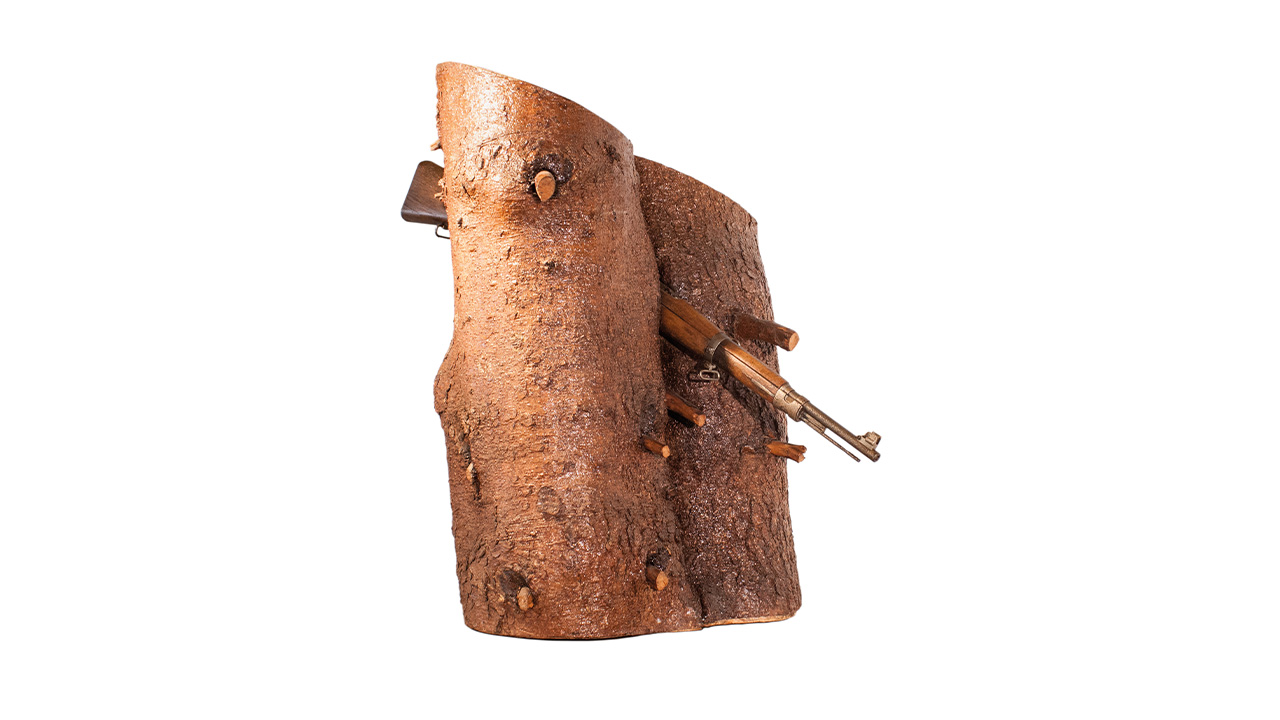Repeating rifles were the basis of the armament of the insurgent 1st Czechoslovak Army in Slovakia. The weapons came from the warehouses of the Slovak Army, which used armaments of Czechoslovak, German, and Austro-Hungarian origin. Apart from a small number of older Mannlicher weapons, these were mainly repeating rifles model 23 and model 24 of the Mauser system. These weapons were the main component of the army’s armament, and together with the model 22 and model 24 pistols, they served as the personal weapons of the soldiers both in the Slovak and insurgent armies.
After the First World War, Czechoslovakia purchased a production facility for Mauser rifles. These rifles gradually became the standard weapon of Czechoslovak soldiers. After several modifications of the original rifle, model 23 and later the definitive model 24 were introduced into the army. The rifles were produced in Zbrojovka Brno (Brno Armoury) and were exported all over the world. In the 1930s, the rise of Nazism prompted the Czechoslovak Army to modernise and equip itself for the possibility of war with Nazi Germany. The production of model 24 rifles was also introduced in Považská Bystrica, Slovakia, where Plant II of Zbrojovka Brno was built.
After the dissolution of Czechoslovakia and the formation of the Slovak Army, the latter inherited the equipment of its predecessor, the Army of the Czechoslovak Republic. The number of model 23 and model 24 rifles in the armament of the Slovak Army was quite sufficient, although a part of the mobilisation needs had to be covered by older rifles of the Mannlicher system. Over time, the use and combat engagement of these weapons resulted either in their total destruction in battle or in becoming technically worn out. Rifles were thus already in short supply in the first half of the war, and this situation could not be fully eliminated. In the case of the older model 23 rifles, there was an effort to sideline them and equip the units of the Labour Corps of National Defence with them. However, this plan was not implemented due to a shortage of rifles, and both designs were used across all army groups. The shortage was resolved by the purchase of a smaller number of model 24 rifles in 1942 and especially by the purchase of spare parts from the manufacturer Zbrojovka Brno, plant II in Považská Bystrica. In addition to repairs of the rifles model 23 and model 24, an adaptation of the model 24 rifle was introduced, which subsequently enabled the use of the German rifle grenade launcher (Gewehr Granat Geräte) used in the Slovak Army as the 3 cm rifle grenade launcher model 41. During the war, the most widely used weapon of the Slovak Army was the repeating rifle model 24.
After the outbreak of the Slovak National Uprising, all the available rifles were used. The insurgents had at their disposal some 40,000 model 23 and model 24 rifles, reinforced by rifles supplied by the Soviet Union to the partisans and through an air bridge, consisting mainly of seized German Mauser K98k rifles and only a few Soviet Mosin rifles. These rifles were also in the arsenal of the 2nd Czechoslovak Paratroopers’ Brigade, transported by air to the insurgent territory. During the Uprising, a shortage of small weapons, including rifles, became apparent. All rear formations had to hand over their small weapons to the combat troops. Only units with combat or training roles were allowed to keep their armaments. Despite this, some five thousand insurgent soldiers remained unarmed at the end of October 1944. The end of October also meant the end of the insurgent army. Some of the weapons were kept by partisan units, and some of them ended up hidden or as booty of German troops.
In 1973, forest rangers found a model 24 rifle embedded in a tree above the village of Nižná Boca. The tree was cut down and transported to the Museum of the SNU. Museum historians then started a search for the fate of the discovered weapon, but only part of the story was uncovered. The discovered rifle was used in 1944 by an unknown insurgent soldier. After he was wounded, the soldier was taken to an infirmary and the weapon was left between small trees that grew around it over the years. Thanks to the forest rangers, however, the rifle became one of the most famous exhibits of the Museum of the Slovak National Uprising in Banská Bystrica.
PhDr. Marian Uhrin, PhD.
